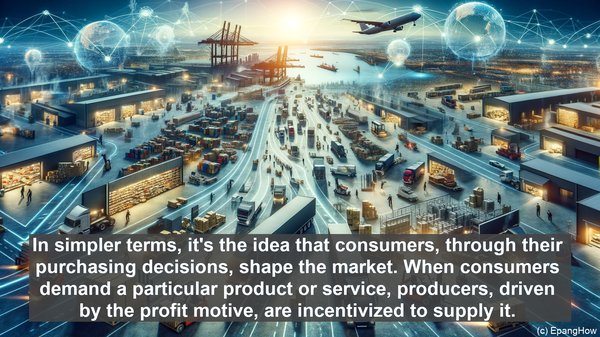Introduction: Setting the Stage
Hello everyone, and welcome to our article on consumer sovereignty and producer sovereignty. In today’s market, where choices abound and businesses strive to meet diverse demands, understanding these concepts is crucial. So, let’s dive in!
Consumer Sovereignty: The Power of Demand
Consumer sovereignty is a fundamental principle that underpins market economies. At its core, it signifies the authority and influence consumers wield over producers. In simpler terms, it’s the idea that consumers, through their purchasing decisions, shape the market. When consumers demand a particular product or service, producers, driven by the profit motive, are incentivized to supply it. This dynamic creates a market environment where consumer preferences and choices are paramount.
Producer Sovereignty: The Power of Supply
On the other side of the spectrum, we have producer sovereignty. While consumer sovereignty emphasizes the role of consumers, producer sovereignty highlights the significance of producers. In essence, it’s the notion that producers, based on their resources, capabilities, and market conditions, have the power to determine what to produce, how much to produce, and at what price. This authority stems from the fact that producers bear the risks and costs associated with production, and therefore, have the prerogative to make decisions that maximize their profitability.
Balancing Act: The Interplay of Consumer and Producer Sovereignty
While consumer sovereignty and producer sovereignty may seem like opposing forces, in reality, they coexist and interact in a delicate balance. The market, in its ideal state, is a dynamic ecosystem where the interplay between these two forces drives efficiency and innovation. When consumer demand for a particular product or service is high, producers, in their pursuit of profits, allocate more resources to its production. Conversely, if demand wanes, producers may shift their focus to other offerings. This constant feedback loop ensures that resources are allocated efficiently, and market equilibrium is maintained.

The Limitations: Constraints on Sovereignty
While consumer and producer sovereignty are powerful concepts, it’s important to acknowledge their limitations. External factors, such as government regulations, market monopolies, and resource constraints, can significantly impact the extent of both consumer and producer sovereignty. For instance, in a monopolistic market, where a single producer dominates, consumer choice may be limited, and the power dynamics skewed. Similarly, government interventions, such as price controls or trade restrictions, can disrupt the natural equilibrium, altering the balance between consumer and producer sovereignty.

